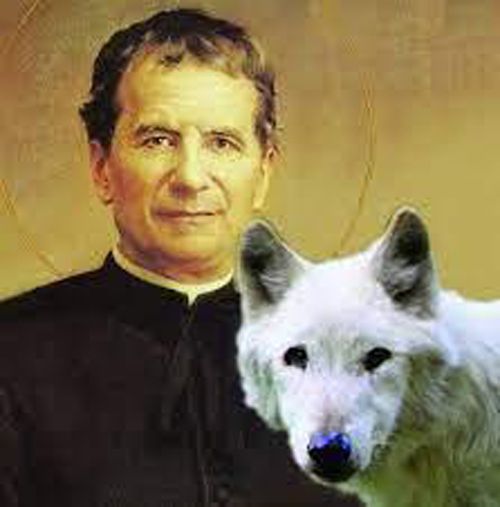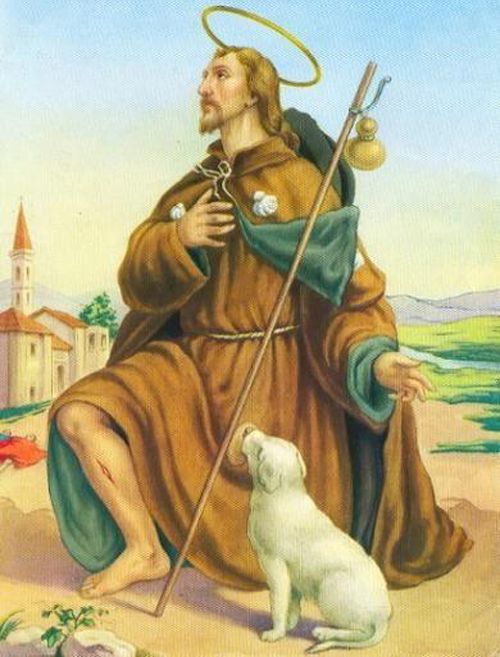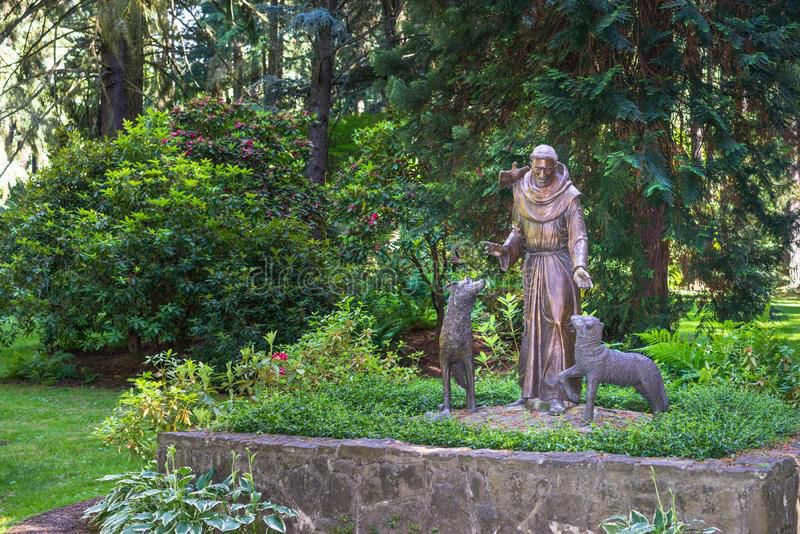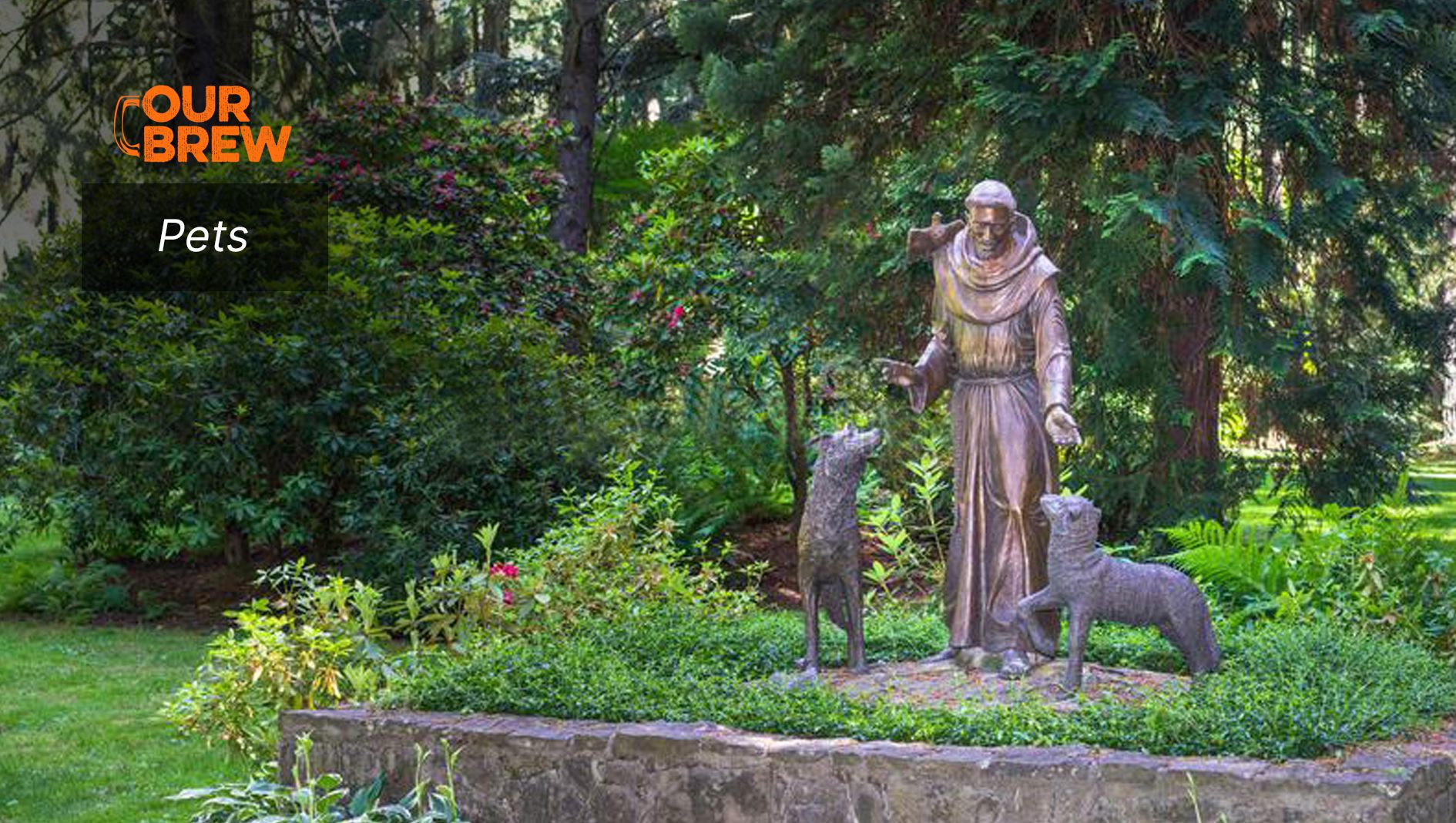by Mariana Burgos
Ever wondered how the dog breed “St. Bernard” got its name? I did. At first, I thought it was the bloodline of the pet dog of St. Bernard. Of course, I was wrong. But it still had something to do with the saint.
November 1 for Catholics is ‘All-Saints’ Day. It is the day we get to celebrate the lives of all the saints. St. Bernard is, indeed, a real saint. The dog breed with the same name, though, is NOT the bloodline of the pet dog of the saint.

Kristina Glicksman said in her article “Saints and Their Furry and Feathered Friends” (3 October 2020) that while their namesake lived in the 11th century, the St. Bernard breed only dates to the 17th. Two hostels were established by St. Bernard of Montjoux (also known as Menthon) along perilous Alps routes that were frequently traveled by Rome-bound pilgrims. The Great St. Bernard Pass and the Little St. Bernard Pass were eventually given these names. In order to help them care for travelers who become disoriented on the perilous and snowy paths, the monks who have maintained the hostels since that time eventually sought the services of dogs. Naturally, this new breed was given the name St. Bernard. Given the job they have done to save countless lives, the name seems well earned.
There are many other saints that are known to have close ties with certain animals, but they did not see them as their pets. They did not think of them as something they can claim as their own. Although the creatures did seem to act as though the saints were their masters, they were never bounded or contained by them.
Saint Francis of Assisi, who is arguably the most well-known of all, is revered as the Patron Saint of all animals and ecology. There is definitely something extraordinary with his relationship with animals, because as it is described in the article about St. Francis of Assisi in Wikipedia, there is nothing ordinary with being able to command flocks of untamed birds and a wild wolf just by speaking to them calmly, and for the first time, for that matter.

Through his writings, his canticle and the prayers he wrote, Saint Francis demonstrated how, when we are at peace with God, we are better equipped to give our all to fostering that peace with all of creation. In light of the fact that everything in existence is a direct outcome of God’s unwavering love for humanity, he sought to deepen that sense of brotherhood for all of God’s creatures.
St. John Bosco never owned a dog as a priest but had a big grey dog who always mysteriously appeared whenever he was in grave danger. He named him Grigio meaning ‘the grey one’. On many occasions, Grigio would appear out of nowhere when St John was being attacked and would successfully save him. The detailed accounts of the many extraordinary instances of the unexplained appearances of Grigio every time St. John Bosco was attacked by unlawful individuals can be read at the website, “Miracles of the Saints” (https://www.miraclesofthesaints.com/2010/10/miracles-with-dogs-birds-other-animals.html).
This next saint is the one that dog owners ought to particularly pray to for their dog because he is the one they say is the patron saint of dogs. St. Roch, aside from being the patron saint of dogs, is also referred to as the protector of bachelors, wrongly accused individuals, and invalids. He was a Catholic Saint from a wealthy family who lived in the 13th century. Admin of the website Savelli writes in their article, “3-Patron Saints of Animals” (28 April 2022), the plague struck St. Roch because he was so near people who were in pain. He entered the forest to die alone because he did not want to burden people with his care. He was discovered by a stray dog, who brought him some bread and took care of him because he was quite weak and malnourished. In addition to bringing the saint food for several days to keep him alive, it is stated that the hunting dog cured the Saint by licking the sores the plague had left. He learnt that the dog belonged to a local Count who had been a friend of his for many years after he fully recovered from the plague. Saint Roch journeyed to Montpellier with his canine companion where they were both apprehended and imprisoned for five years on suspicion of spying. Some reports stated that the dog continued to look after other captives for years after the Saint passed away. If you ask me, that was kind of a bitter-sweet conclusion.

I have always believed that true holiness is best shown if a person is kind not just to his fellowmen but to all of God’s creation. True saints were not really afraid of any animal even as ferocious as a wolf or a lion. Nor were they grossed out by anything about them. And, most importantly, they never looked at animals as lower beings than they are. That’s why they never treated them as pets.
About the Author: Mariana Burgos is a freelance artist. She is a solo parent for 15 years now because she is the wife of a desaparecido. She and her daughter are animal lovers and are active in advocating not only human rights but the rights of animals as well.
This article also appears in the Manila Standard

If you liked what you just read and want more of Our Brew, subscribe to get notified. Just enter your email below.


Related Posts
Understanding Pets With Special Needs
Mar 03, 2025
Can Cats Eat Basil Leaves?
Feb 20, 2025
The Right Way to Pick Up, Hold, and Carry Your Dog
Feb 17, 2025